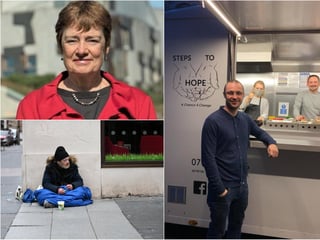Edinburgh's pre-Covid plans to build thousands more affordable homes now the stuff of fantasy – John McLellan
Grammatically speaking that may be true but, as this column pointed out recently, public statements from administration councillors and a subsequent official report repeated it was a promise to build, not a promise of plans.
Whatever. Come next year a creditable 5,000 will have been constructed and the best that can be said for the remainder is planning permission might have been granted and there is an achievable council-led plan to build a total of 10,000 affordable homes, possibly by 2027.
Advertisement
Hide AdAdvertisement
Hide AdBut where does this leave the other half of the administration’s number-one commitment, to produce a plan for 20,000 by 2027? The confusion about what the council is actually promising to do extends to the “Choices for City Plan 2030” document, which should become the blueprint for Edinburgh’s development over the rest of the decade.
“The council has committed to delivering 20,000 affordable homes in the next 10 years,” it says on page 27, and repeats on page 28, “We have already committed to delivering 20,000 affordable homes to 2027.”
So more than just a pledge to produce a plan, but with 15,000 still to go we can assume there is more chance of Joanna Cherry going on holiday with Nicola Sturgeon than the target being met.
If we also assume one bit of the council doesn’t know what the others have promised and the homes won’t all be built, even if there is a plan will it be worth the paper on which it’s written?
Advertisement
Hide AdAdvertisement
Hide AdThe Choices brochure outlines the council’s preferred option, which is to find room for 17,600 homes in the urban area to avoid greenbelt development, and to “rapidly intervene” to find brownfield sites which it warns might need a “significant compulsory purchase programme”.
This means a land grab, because already it is known that around a third of the identified sites are undeliverable, largely because the land isn’t for sale. There are an estimated 300 different owners of the plots the council thinks can take houses, but few have been asked if they are prepared to sell.
One developer contacted over 100 Edinburgh landowners and less than a tenth showed any interest. Some, like the insurance giant Royal London which owns a large chunk of the Seafield retail area the council wants to redevelop, have already said no.
The other problem is the council needs more money from the Scottish government to meet the existing aims, but last week the Finance Secretary Kate Forbes cut the national affordable housing budget by 16 per cent.
Advertisement
Hide AdAdvertisement
Hide AdIn other words, there is neither the land nor the money to achieve the council’s preferred approach, but the response appears to be sticking their fingers in their ears and pretending it isn’t true.
We still don’t know what the full impact of the pandemic will be on population growth, and maybe with what looks like being a very long recovery it will be sufficient. But it a fair assumption that pre-pandemic plans, projections and ambitions are, for now, the stuff of fantasy.
John McLellan is a Conservative councillor
A message from the Editor:
Thank you for reading this article. We're more reliant on your support than ever as the shift in consumer habits brought about by coronavirus impacts our advertisers.
If you haven't already, please consider supporting our trusted, fact-checked journalism by taking out a digital subscription.
Comment Guidelines
National World encourages reader discussion on our stories. User feedback, insights and back-and-forth exchanges add a rich layer of context to reporting. Please review our Community Guidelines before commenting.

